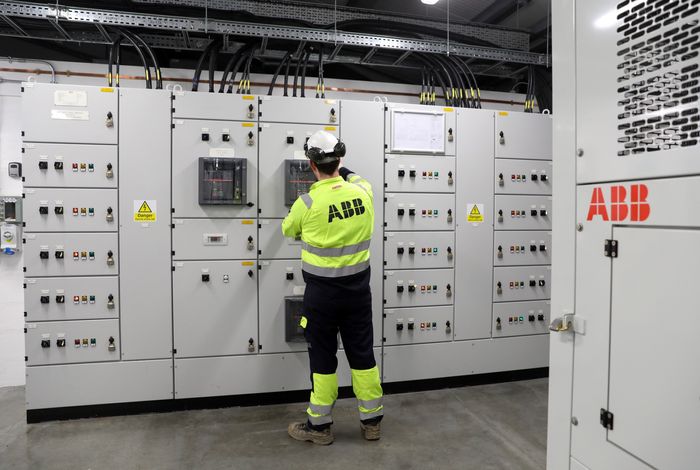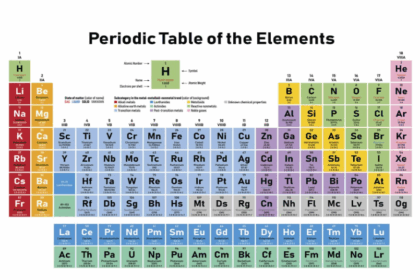Oceans contain energy that is both renewable and predictable—an appealing combination given the challenges posed by fluctuating wind and solar power. But the technologies for harvesting marine energy will need a boost if they are to go mainstream.
Water is more than 800 times as dense as air, so it carries a lot of energy when moving. Waves off the U.S. coasts have theoretical energy potential equivalent to two-thirds of the nation’s 2020 electricity generation, according to the U.S. Energy Information Administration. Better still, water is complementary to wind and sunshine, today’s established but volatile sources of renewable energy. Tides are known decades ahead of time, while waves are persistent, storing up wind energy and arriving for days after the winds stop.
Marine energy’s big challenge is cost. Building reliable machines that can survive the extremely harsh ocean environment created by saltwater and big storms makes it many times more expensive than wind or solar energy. That will change only with government backing.
Capturing marine energy was a hot prospect in Britain in the mid 2000s, with the likes of Rolls Royce, General Electric and Siemens getting involved. Technology was improving, but then government funding was cut. While the big guys eventually shelved their plans, many small companies persisted, often helped by European Union grants.
A number of marine energy machines have now proven they work at Scotland’s European Marine Energy Centre and at the Wave Energy Test Site in Hawaii. “All the pieces are here now. We’ve got this working,” says Neil Kermode, chief executive of EMEC, highlighting technical factors such as subsea experience and new digital-control technologies.

The MeyGen project’s majority owner is publicly listed SIMEC Atlantis.
Photo: Chris Ratcliffe/Bloomberg News
Some small ocean-energy machines are already cost-competitive in locations where power is expensive or challenging to obtain, such as remote communities and distant offshore platforms, says Brian Polagye, engineering professor and director of the Pacific Marine Energy Center. So far the environmental impact of marine energy machines—noise, behavioral effects or possible collisions—hasn’t been significant, but larger deployments would warrant further study and designs may need to be adapted.
For wider applications, marine energy would need to be cheaper. Government support is likely required to take the industry through the classic technology development process of improving designs and processes, developing supply chains, scaling up production and getting cheaper funding. Financing can be up to half of a project’s cost, so obtaining interest rates in line with the offshore wind industry could immediately cut a marine project’s cost by 30% to 40%, says Rémi Gruet, chief executive of Ocean Energy Europe.
In November, Britain ringfenced £20 million (about $26.5 million) a year for tidal-stream energy in its next low-carbon electricity auction. The EU also has an ocean energy strategy targeting cost-competitive tidal stream energy by 2030 and wave energy by 2035.
Technologies to capture energy from tidal streams are most advanced, benefiting from some wind-turbine developments. Most designs look like underwater wind turbines, either secured to the seabed or inverted so that they project from the bottom of a floating platform. Seabed machines leave the surface clear for other vessels, while floating ones provide easier access for maintenance and harvest near the higher-energy top of the water column. There are tidal projects operating in New York City’s East River, Canada’s Bay of Fundy as well as in China, France, Japan, the Netherlands and the U.K.
Wave technology is earlier-stage. Designs vary widely because wave energy can be captured in a number of ways: from underwater pressure changes, the vertical or horizontal movement or even the circular motion of water molecules. A number of machines have been proven to work at EMEC or at Hawaii’s facility, but utility-scale projects are likely years off.
At such an early stage, it can be hard for investors to access the marine energy theme, let alone pick winners. There are relatively few pure-play public companies. New York-listed Ocean Power Technologies sells buoys that harvest and store wave energy. SIMEC Atlantis. which is listed in London, has tidal energy plans in multiple countries, including a majority share of MeyGen, Europe’s largest planned tidal project.
Most other companies with proven technologies remain private, including Verdant Power, Sustainable Marine Energy, Sabella, Orbital Marine Power and Magallanes Renovables. For many, test-center performance data is a crucial precursor to seeking private investment to fund projects or development steps. Institutional investors could get early signals by watching who is testing equipment.
Ocean energy has come a long way, but has more to prove. Unlike the tides it harvests, how the market develops from here may still be too unpredictable for most private investors.
Write to Rochelle Toplensky at [email protected]
Copyright ©2022 Dow Jones & Company, Inc. All Rights Reserved. 87990cbe856818d5eddac44c7b1cdeb8








